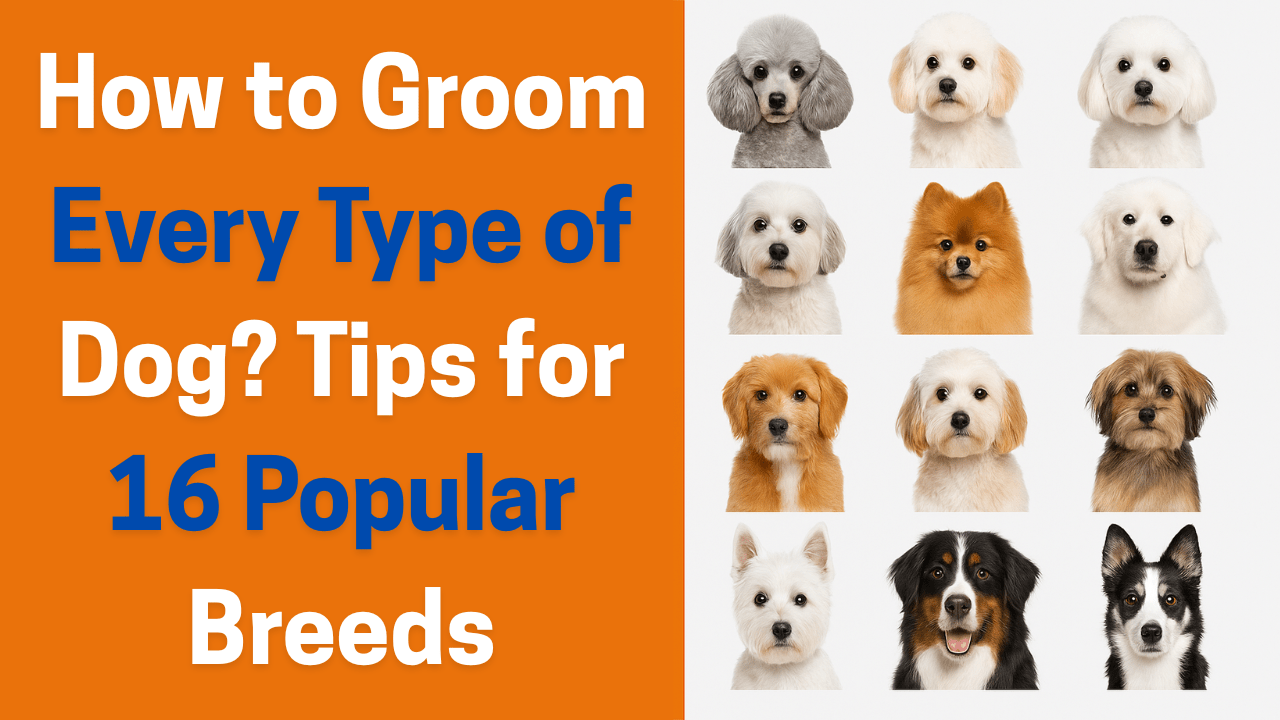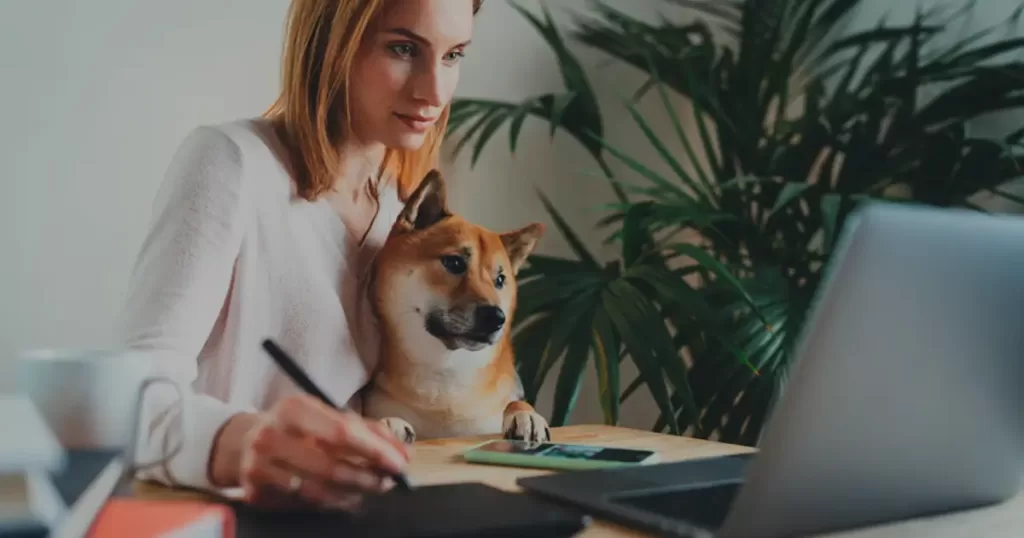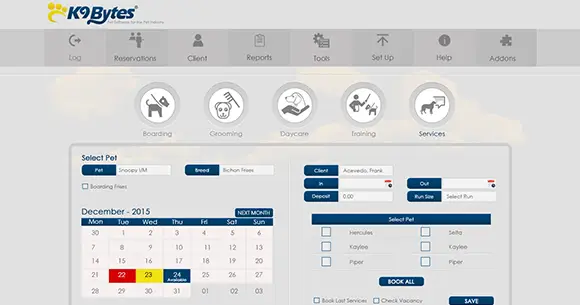Grooming is one of the most important things you can do for your dog’s health and happiness. It is not just about keeping your dog clean. It’s about checking their skin, coat, nails, and overall health. Dogs not groomed regularly can suffer from matted fur, dirty ears, infections, or joint problems from overgrown nails. According to the American Pet Products Association, over 70% of dog owners in the U.S. groom their dogs at home or take them to a groomer at least once every two months. Some dog breeds need even more attention because of their hair type, coat length, or body shape.
This guide will teach you how to groom 16 popular dog breeds. Each dog has different needs. Some dogs need brushing every day, while others only once a week. Some need regular trims, while others need baths and brushing. If you are new to grooming, don’t worry. We will walk you through the grooming process step-by-step, with facts, expert tips, and helpful tools. This guide will help you feel confident grooming your dog at home or knowing what to ask a groomer if you hire one.
Before we discuss each breed in detail, let’s first understand what grooming means and why it’s so important.
What is Dog Grooming and How to Groom a Dog
Dog grooming means caring for your dog’s coat, skin, nails, ears, and sometimes even teeth. It includes bathing, brushing, trimming fur, cutting nails, and cleaning ears. Grooming helps your dog stay healthy and prevents painful mats, overgrown nails, or infections. If you’re new to grooming, start slowly and make it fun for your dog. Talk gently, reward them with treats, and never rush. Every dog is different, so grooming needs to change by breed. We have already written a full guide if you want to learn the complete steps of grooming a dog properly. You can read our article How to Groom a Dog for a complete walk-through.
Now, let’s look at how to groom each of these 16 dog breeds, starting with the Poodle, one of the most stylish dogs.
1. How to Groom a Poodle Dog
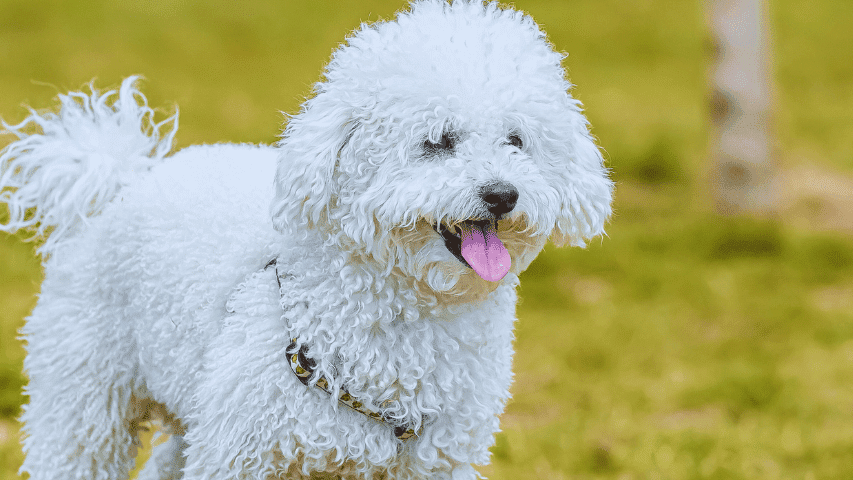
Poodles are known for their fancy haircuts but are also loved because of their curly, hypoallergenic coat. Their hair grows continuously, so they don’t shed much like other dogs. However, this also means they need regular grooming to avoid painful mats and keep their coat soft. A matted Poodle coat can lead to skin infections, itchiness, and discomfort. According to PetMD, a Poodle’s coat should be brushed daily, bathed, and trimmed every 4 to 6 weeks.
Poodles come in three sizes: Standard, Miniature, and Toy, and all three sizes need the same kind of grooming care. They are among the most common breeds in grooming salons because their coat requires regular trimming and shaping. If you groom your Poodle at home, it saves money, but it does take time and practice. Poodles are also prone to ear infections because of the hair inside their ear canals, so regular ear cleaning is necessary.
The average grooming session at a salon for a Poodle can cost between $70–$100, depending on the size and style of the haircut. Many owners also clip their Poodles at home using clippers and grooming scissors. The good news is that once you learn how to groom a Poodle dog, it becomes a bonding activity between you and your pet. Remember that businesses should use software to manage grooming sessions for this dog and all the breeds below. Even if you’re doing the grooming at home, you can still use helpful tools like Grooming Software to set reminders, track grooming needs, and stay organized with your dog’s care.
Grooming Steps for a Poodle Dog:
- Brush the coat daily using a slicker brush to remove tangles and prevent mats.
- Use a detangling spray if the coat is too curly or dry.
- Bathe your Poodle every 3 to 4 weeks with dog shampoo and conditioner made for curly hair.
- After the bath, dry the coat completely using a pet-safe dryer on low heat.
- Use clippers and scissors to trim the coat every 4 to 6 weeks into your preferred style (puppy cut, continental clip, etc.).
- Clean the ears weekly with an ear-cleaning solution and pluck ear hair gently if it’s growing inside the ear canal.
- Trim the nails every 2 to 3 weeks using nail clippers or a grinder.
- Brush the teeth of your poodle dog weekly to prevent dental problems.
2. How to Groom a Maltipoo Dog
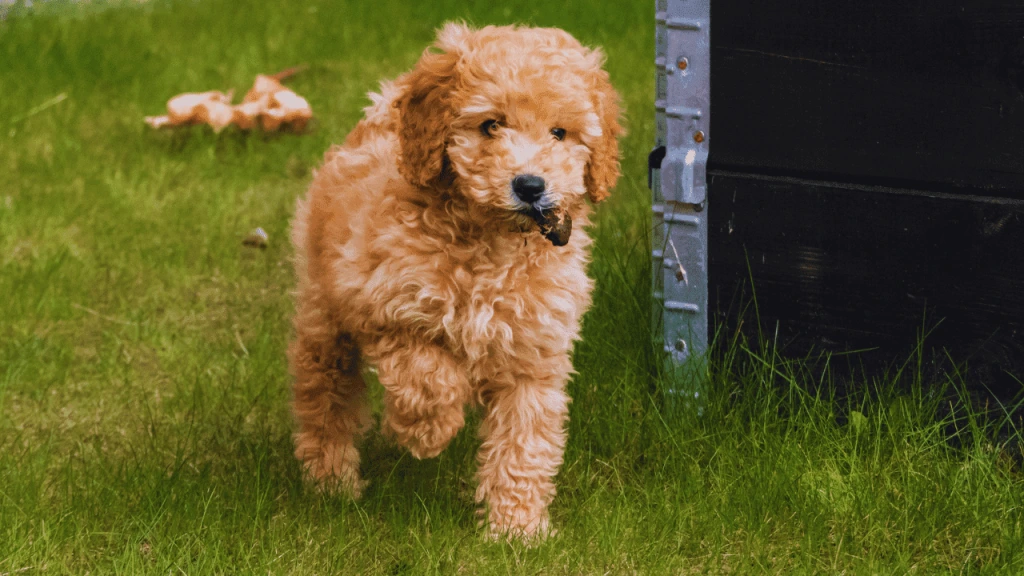
Maltipoos are a cross between a Maltese and a Poodle, which means they usually have soft, wavy, or curly fur. Because of their mix, Maltipoos can have coats that mat quickly if not brushed often. These cute, small dogs are great for families, but their coat needs regular attention. A matted Maltipoo can become itchy, sore, and even lose fur in spots if not appropriately groomed. That’s why most experts recommend brushing a Maltipoo at least every two to three days and bathing them once a month.
Maltipoos are also known for getting tear stains under their eyes, making their face look messy. Their coat, especially around the face and legs, needs gentle care. Taking your Maltipoo to a professional groomer may cost around $50 to $75, depending on where you live and how detailed the trim is. Many Maltipoo owners like to keep their dogs in a short “puppy cut” to make care easier. It helps reduce tangles and keeps the dog cool during hot months.
Grooming also helps check for fleas, ticks, or skin rashes that small breeds are more prone to. The good news is, with regular grooming, a Maltipoo will always look and feel its best.
Grooming Steps for a Maltipoo Dog:
- Brush the coat every 2–3 days using a soft slicker or pin brush.
- Use a tear stain remover or a damp cloth to wipe the area under the eyes daily.
- Bathe once every 4 weeks with a mild dog shampoo for sensitive skin.
- Dry the fur completely before brushing again to avoid breakage or mats.
- Trim the coat every 6 to 8 weeks using grooming scissors or clippers, especially around the face, paws, and tail.
- Clean the ears every 1 to 2 weeks and look for signs of redness or odour.
- Clip the nails every 3 to 4 weeks or sooner if you hear them tapping on the floor.
- Check the paws for debris or knots between the pads.
3. How to Groom a Maltese Dog
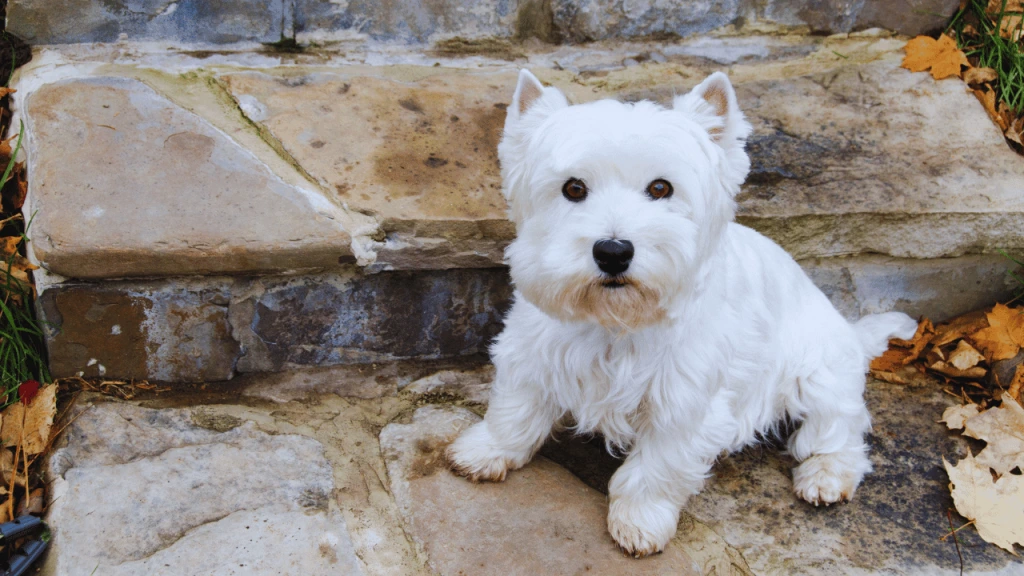
The Maltese is famous for its long, silky white coat. It’s a beautiful breed, but it requires daily attention. Maltese dogs have hair instead of fur, which keeps growing, just like human hair. Because of this, grooming is essential to stop tangles, mats, and dirt from building up. When their coat gets dirty or knotted, it can irritate their skin and lead to infections. According to the American Kennel Club, the Maltese should be brushed daily and bathed every 2 to 3 weeks.
Owners who want an easier grooming routine often give their Maltese a “puppy cut.” This short hairstyle makes it easier to care for the coat and prevents mats. However, the coat must stay long for shows and needs special attention, including wrapping the hair to avoid damage. Tear stains are also common in this breed, especially under the eyes, due to their white fur and shallow tear ducts.
Grooming your Maltese isn’t just about beauty but comfort and health. Without it, the dog may scratch, lick excessively, or get painful mats behind the ears or under the legs. Taking your dog to a professional groomer may cost $60 to $90 per session.
Grooming Steps for a Maltese Dog:
- Brush the coat daily using a soft pin brush or metal comb to prevent knots.
- Use a tear stain remover under the eyes each morning or a soft, damp cloth to wipe away buildup.
- Bathe your Maltese every 2 to 3 weeks using a whitening dog shampoo and a gentle conditioner.
- Blow-dry the coat carefully after the bath on low heat to avoid tangles or frizz.
- If you want a short style, trim the coat every 6 to 8 weeks using grooming scissors or clippers, which you can choose from the 10 dog grooming clippers options.
- Wrap long hair after applying a conditioning spray to keep it smooth for a show look.
- Clean the ears weekly using a dog-safe ear cleaner and cotton balls.
- Trim the nails every 3 weeks to prevent joint pain or injury.
- Brush your teeth weekly to avoid dental disease.
4. How to Groom a Havanese Dog
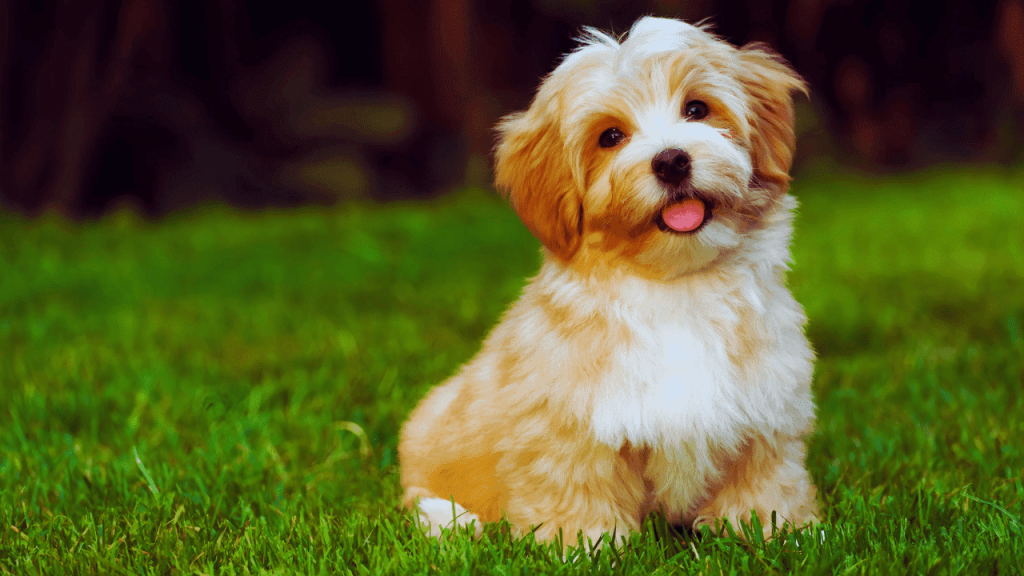
The Havanese is a small, cheerful dog with a thick, silky coat that can be straight or wavy. Because their fur is soft and grows continuously, Havanese dogs need frequent grooming to stay neat and comfortable. If their coat is not brushed, it can form mats, especially around the neck, belly, and legs. Mats can pull on the skin and be very painful. Grooming a Havanese dog regularly helps avoid those problems and keeps their fluffy appearance.
Many Havanese owners groom at home to save money. A professional grooming session for a Havanese typically costs $50 to $80. You will need good tools and patience if you prefer doing it yourself. These dogs are friendly and respond well to gentle care, especially when started young. Bathing should happen every month or sooner if they play outside a lot. Their ears are floppy, so regular cleaning is important to avoid infections.
Some owners keep their Havanese long and flowy, while others prefer a shorter, easier-to-manage “puppy cut.” Either way, brushing and trimming are a must. Grooming also lets you check their skin and ears for issues.
Grooming Steps for a Havanese Dog:
- Brush the coat daily or every other day using a slicker brush to prevent mats.
- Use a conditioning spray to help the brush glide through its soft coat.
- Bathe every 3 to 4 weeks with a gentle shampoo for long-haired dogs.
- Towel dry gently, then finish drying with a blow dryer on a low setting to prevent tangling.
- Trim the coat every 6 to 8 weeks, focusing on the legs, feet, and face.
- Clean ears weekly with a dog ear cleaner; dry them well to avoid yeast buildup.
- Trim nails every 3 weeks and check paw pads for fur buildup or dirt.
- Clean around the eyes daily using a soft cloth or tear stain remover.
5. How to Groom a Pomeranian Dog
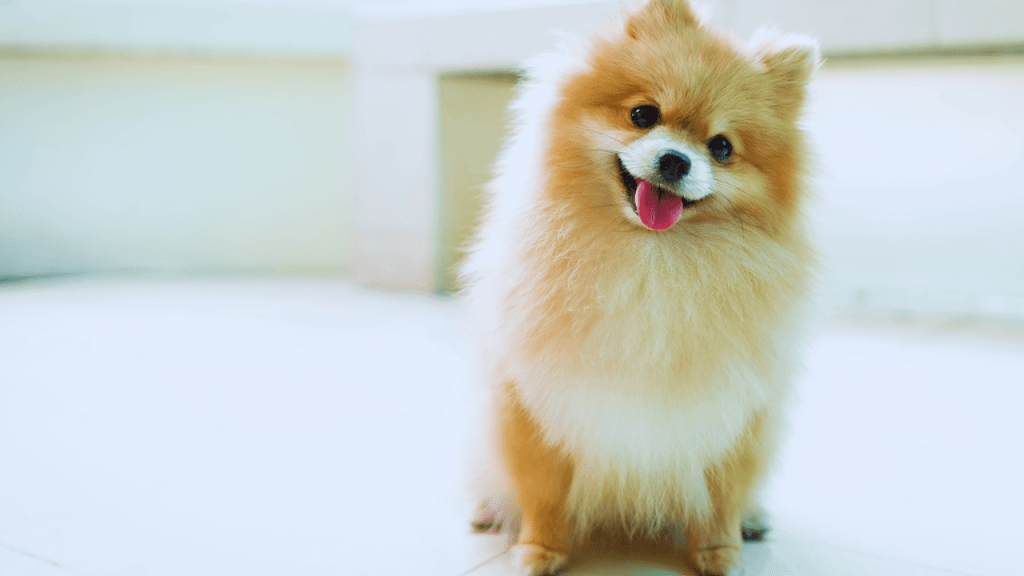
Pomeranians are small dogs with prominent personalities and a lot of fur. They have a thick double coat, soft undercoat, and longer outer coat. It gives them their fluffy look, but it also means they shed a lot and can get mats easily if not groomed often. Pet grooming experts say brushing your Pomeranian 3 to 4 times weekly is ideal. You may need to brush them daily during the shedding season, usually in spring and fall.
Pomeranians also need regular baths every 4 to 6 weeks. Their small size makes it easier to bathe and dry them at home, but drying must be done thoroughly. Leaving their thick undercoat damp can cause skin problems like hot spots. If mats are not removed, they can tug on the skin and make your dog uncomfortable. A professional grooming session for a Pomeranian typically costs $50 to $70, depending on the cut.
Many owners choose the popular “teddy bear” or “fox cut” styles to keep their Pom looking neat and cute. These energetic dogs need calm and gentle grooming sessions. Always reward your dog with treats and praise.
Grooming Steps for a Pomeranian Dog:
- Brush the coat 3 to 4 times weekly using a slicker brush and undercoat rake.
- During the shedding season, brush daily to control loose fur and reduce tangles.
- Use a detangling spray for hard-to-brush areas like behind the ears or under the arms.
- Bathe every 4 to 6 weeks using a dog shampoo made for double-coated breeds.
- Blow-dry completely using a pet-safe dryer on low heat, brushing as you dry.
- For neatness, trim the fur around the paws, hocks, and tail every few weeks.
- Avoid shaving a Pomeranian; it can damage the coat and cause it not to grow back correctly.
- Clean the ears and trim the nails every 2 to 3 weeks.
6. How to Groom a Great Pyrenees Dog
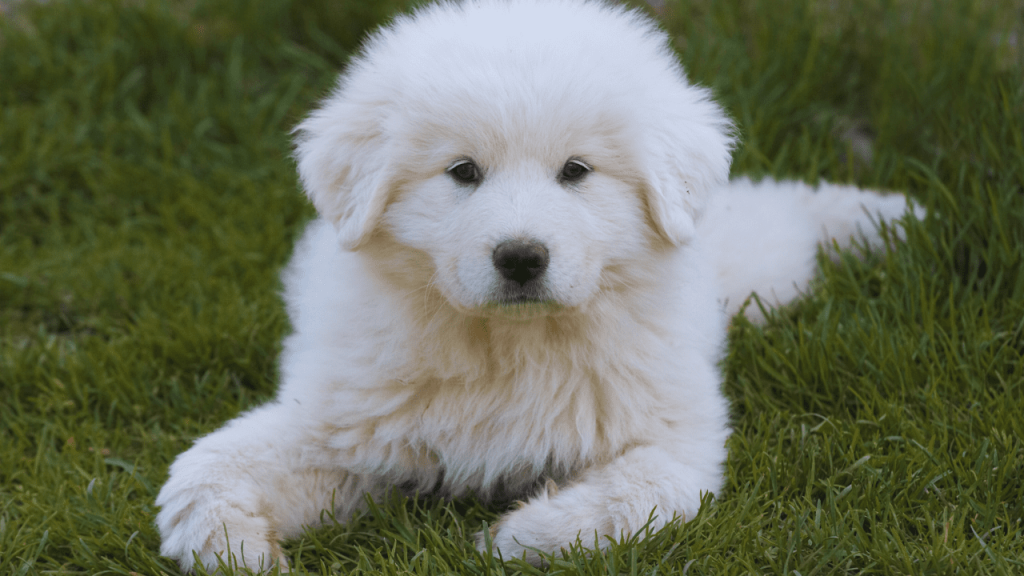
The Great Pyrenees is a large, majestic breed with a thick white double coat. These dogs were bred to guard sheep in the mountains, so their coats protect them from all weather. But this also means they shed a lot. Grooming a Great Pyrenees is a serious task because of its size and thick fur. According to the Great Pyrenees Club of America, brushing twice weekly is needed, but it should be done daily during seasonal shedding.
Their coats don’t need trimming unless it’s around the feet or tail for tidiness. Bathing a Great Pyrenees can be hard at home due to their size. They usually only need a bath every 8 to 10 weeks unless they roll in mud or get too dirty. When wet, their thick coat takes a long time to dry, so use towels and a high-powered pet dryer if possible.
Professional grooming for a Great Pyrenees can cost $90 to $120 per session. These gentle giants are calm and tolerant, so grooming is usually easy if started at a young age. Always check for ticks or burrs in their coat, especially after outdoor walks.
Grooming Steps for a Great Pyrenees Dog:
- Brush 2 times per week with a slicker brush and an undercoat rake to control shedding.
- During spring and fall, brushing daily is increased to handle heavy coat loss.
- Use a wide-tooth comb to detangle mats, especially behind the ears and tail.
- Bathe every 2 to 3 months using a gentle shampoo; rinse well to avoid buildup.
- Dry thoroughly using large towels and a pet dryer on medium heat.
- Trim paw fur and around the tail every 4 to 6 weeks.
- Check ears weekly and clean them with a vet-recommended solution.
- Clip nails monthly and brush teeth weekly for overall hygiene.
7. How to Groom a Chow Chow Dog
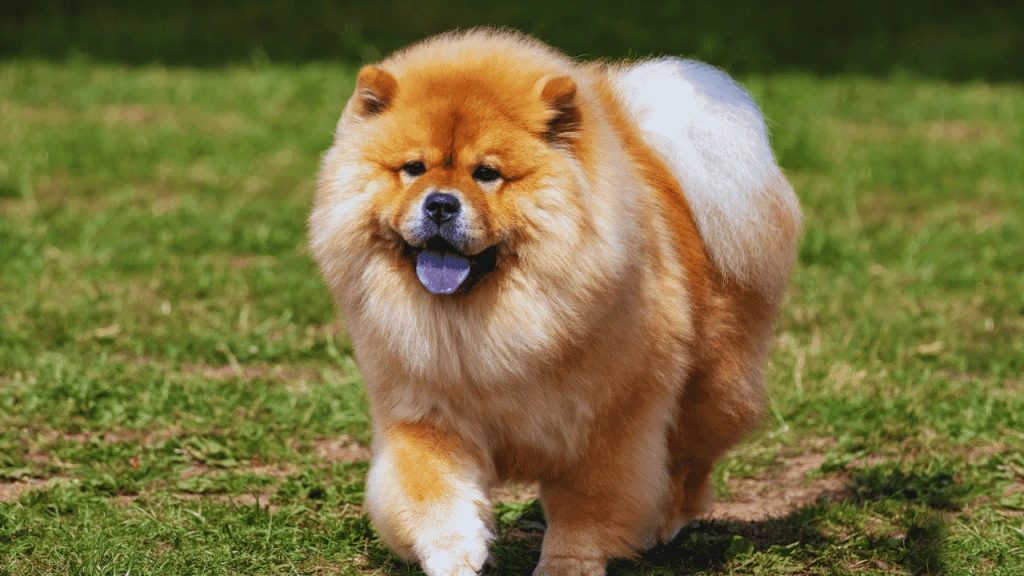
Chow Chows look like teddy bears thanks to their super-thick double coat and fluffy mane around the head. They are naturally clean dogs, but need serious grooming to stay that way. Chow Chows shed heavily, especially during spring and fall. Their thick fur can trap dirt and moisture, leading to mats and infections if not cleaned regularly. Grooming a Chow Chow should be done three times a week or daily during heavy shedding periods.
According to breed experts, Chows need regular brushing, especially under the legs, behind the ears, and around the tail. Their fur is so dense that air and water can get trapped close to the skin, which may lead to skin hot spots. Depending on coat condition, professional grooming can cost $80 to $10,0.
Bathing a Chow Chow should happen once a month or every six weeks. Make sure the fur is thoroughly dried after a bath. Chows don’t need haircuts but benefit from trimming around the feet and tail for cleanliness.
Grooming Steps for a Chow Chow Dog:
- Brush the coat at least 3 times a week using a long-pin slicker brush and undercoat rake.
- Check for mats behind the ears, under the legs, and along the neck.
- Use a conditioning spray while brushing to reduce pulling.
- Bathe every 4 to 6 weeks, rinse and dry the thick coat completely.
- Avoid shaving the coat; it affects temperature regulation and coat texture.
- Trim paw fur and check for burrs after walks.
- Clean ears weekly and check for any signs of redness or odour.
- Trim nails every 3 weeks, and brush teeth regularly.
8. How to Groom a Bichon Dog
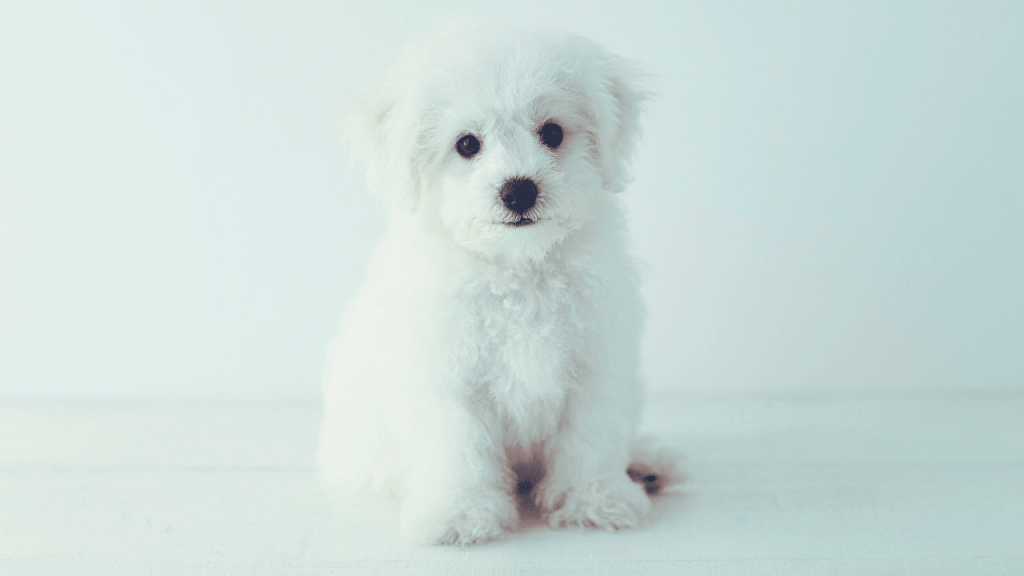
The Bichon Frise is known for its soft, curly white coat and happy personality. While they don’t shed much, their curly hair grows nonstop and traps dirt and mats easily. That’s why grooming a Bichon dog is something you can’t skip. According to the AKC, a Bichon should be brushed daily and professionally groomed every 4 to 6 weeks. Their skin is also sensitive, so it is important to use the right shampoo and Dog Grooming Tools.
Their beautiful coat needs fluffing to maintain that cloud-like look. Many owners like to keep their Bichon in the traditional “Bichon cut,” which requires regular scissor work and shaping. Professional grooming for a Bichon can cost between $60 and $85. Daily brushing helps prevent painful mats at home, especially around the neck, chest, and tail.
These cheerful dogs enjoy attention, and grooming can be a bonding experience. Start young, be gentle, and keep treats nearby to make the process easier.
Grooming Steps for a Bichon Dog:
- Brush daily with a slicker brush and metal comb to prevent mats.
- Use a dog conditioner spray to make brushing smoother.
- Bathe every 3 to 4 weeks with a whitening or sensitive-skin shampoo.
- Blow-dry the coat while brushing to fluff and prevent curls from clumping.
- Trim the coat every 4 to 6 weeks into a round shape or puppy cut.
- Clean ears weekly and check for wax buildup or odour.
- Clip nails every 2 to 3 weeks and brush teeth weekly.
9. How to Groom a Cockapoo Dog
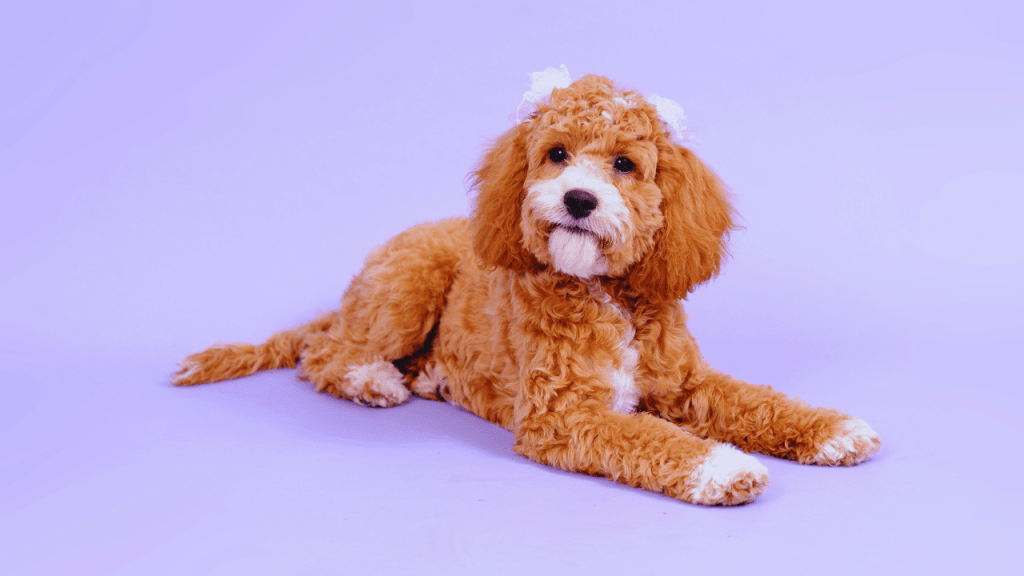
Cockapoos are a mix of Cocker Spaniel and Poodle, meaning their coats can be curly, wavy, or soft. Each Cockapoo is a bit different, so grooming needs vary, but all need regular brushing and trimming. If their coat is ignored, it can become badly tangled. Brushing at least 3 times a week is recommended. Many owners opt for a short “teddy bear” or “puppy” cut every 6 to 8 weeks to make maintenance easier.
Cockapoo dog grooming also means cleaning their long ears, which can trap dirt and moisture, leading to infections. Their friendly nature makes them easy to groom, especially when they start young. Depending on coat condition, A full groomer may cost $60 to $90 at grooming salons.
These dogs are playful and love outdoor fun, so they get dirty easily. Grooming helps check their body for burrs, bugs, or minor cuts after play.
Grooming Steps for a Cockapoo Dog:
- Brush the coat 3 to 4 times weekly using a slicker brush and metal comb.
- Trim the coat every 6 to 8 weeks, especially around the eyes and paws.
- Bathe monthly with a mild shampoo; rinse well and dry thoroughly.
- Clean ears weekly and look for redness, odour, or moisture.
- Trim nails every 3 to 4 weeks, and keep paws clean.
- Use a de-matting comb if tangles form behind the ears or legs.
10. How to Groom a Cocker Spaniel Dog
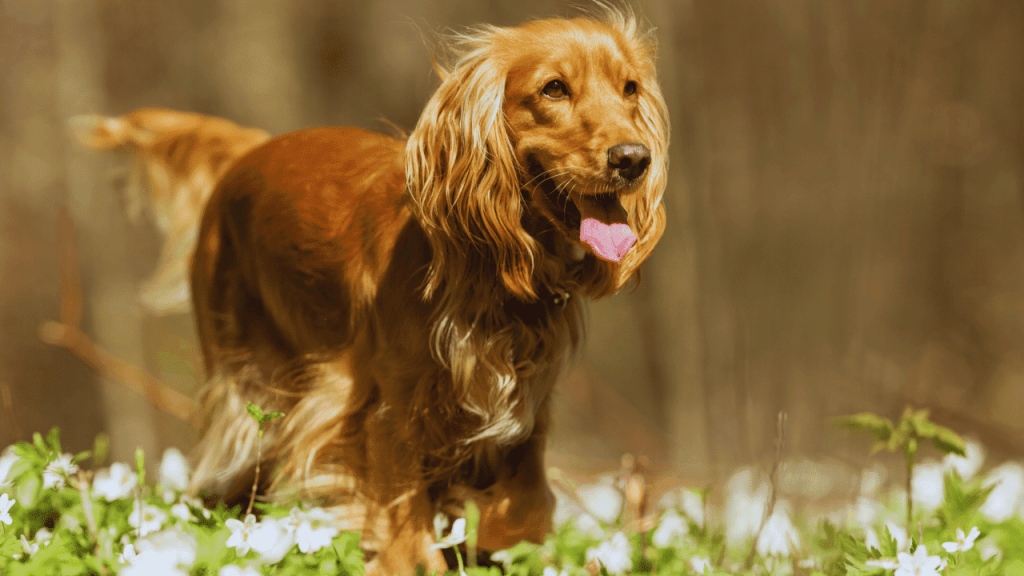
Cocker Spaniels have a long, silky coat that’s beautiful but needs much care. Grooming a Cocker Spaniel dog involves brushing several times weekly and trimming the coat regularly. Their long ears can trap dirt and moisture, making them prone to infections. According to veterinarians, it’s one of the top breeds for ear problems, so cleaning is essential.
Cocker Spaniels also need regular haircuts to manage the feathering on their legs and chest. Depending on your preference, dog grooming for Cocker Spaniels usually includes hand-stripping or clipping. Salon grooming can cost $70 to $100, depending on the length and cut.
If their coat gets matted, it can be painful and lead to skin issues. Grooming keeps them clean and makes playtime more comfortable.
Grooming Steps for a Cocker Spaniel Dog:
- Brush every 2–3 days using a slicker brush and comb to prevent tangles.
- Trim coat every 6 weeks, especially the feathered areas.
- Bathe every 3 to 4 weeks with a gentle shampoo.
- Clean long ears weekly using vet-approved ear cleaners.
- Trim the nails every 2 to 3 weeks, and check paws for burrs or debris.
- Use blunt scissors to clean up fur on the feet and under the tail.
11. How to Groom a Husky Dog
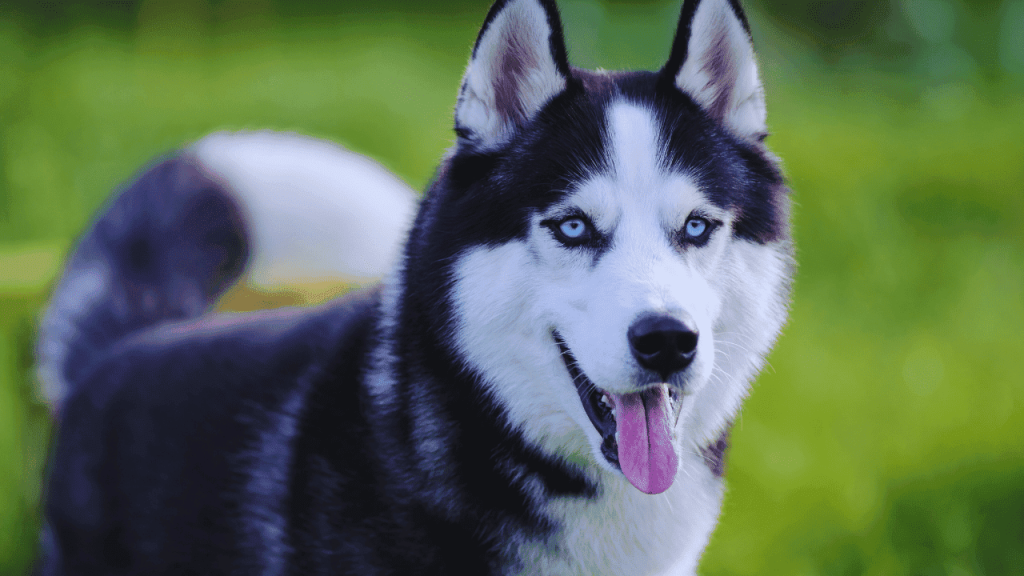
Huskies are built for cold climates and have thick double coats that shed heavily twice a year. Dog grooming for Huskies mainly focuses on managing the undercoat, which blows out during shedding season. Brushing your Husky several times a week helps keep shedding under control and prevents mats. Never shave a Husky. It removes the coat’s protection and can lead to sunburn or overheating.
Bathing is only needed every 2 to 3 months unless your Husky gets dirty. Grooming for Husky dogs is more about brushing and less about trimming. Professional de-shedding treatments at groomers can cost $70 to $100.
These athletic dogs enjoy being outside, so grooming is a time to check for ticks or cuts.
Grooming Steps for a Husky Dog:
- Brush 3 to 4 times weekly with an undercoat rake and slicker brush.
- During the shedding season (spring and fall), brush daily to remove loose fur.
- Bathe every 8 to 10 weeks with dog shampoo; rinse well.
- Never shave the coat because it removes natural insulation.
- Clean ears monthly and trim nails every 3 weeks.
- Use a blower to help remove the undercoat after a bath.
12. How to Groom a Morkie Dog
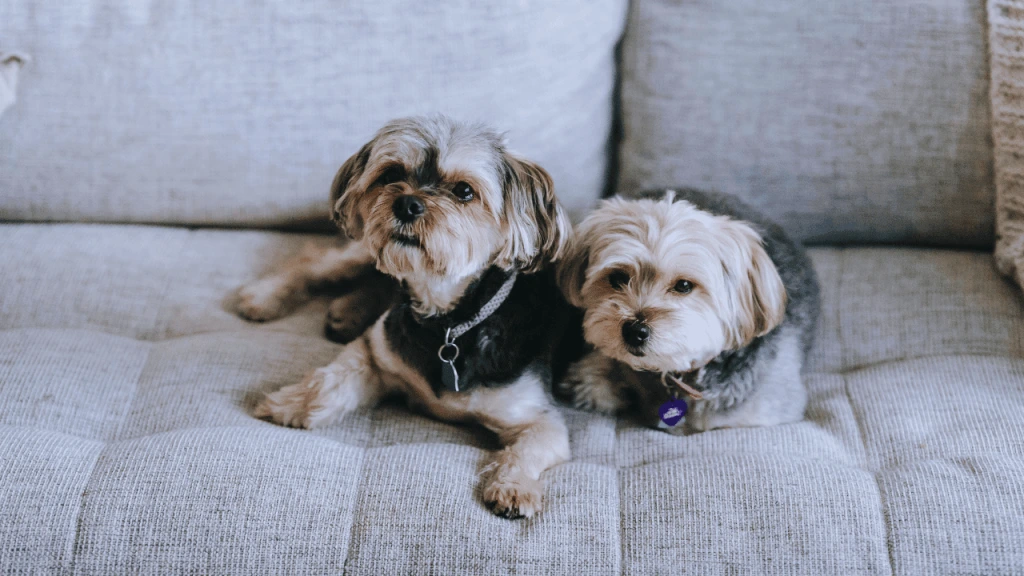
Morkies are a mix of Maltese and Yorkie, both breeds with long, silky coats. Morkie hair grows constantly and can become a tangled mess without regular care. Grooming a Morkie dog includes brushing 3–4 times a week, regular bathing, and trimming every few weeks. Their face and eyes need daily cleaning to avoid tear stains.
Dog grooming for Morkies can be done at home with patience and practice. Depending on size and style, a pro groomer will charge $50 to $75. Many owners give them a simple puppy cut to reduce grooming time.
These little dogs can have fragile skin, so be gentle during grooming and always use soft brushes.
Grooming Steps for a Morkie Dog:
- Brush 3 to 4 times weekly with a soft-bristle brush or pin brush.
- Trim coat every 6 to 8 weeks, especially around the face and paws.
- Bathe monthly using a gentle shampoo.
- Clean under the eyes daily with tear-stain wipes or a damp cloth.
- Clip nails every 3 to 4 weeks, and keep paws trimmed.
- Clean ears weekly and check for buildup.
13. How to Groom a Westie Dog
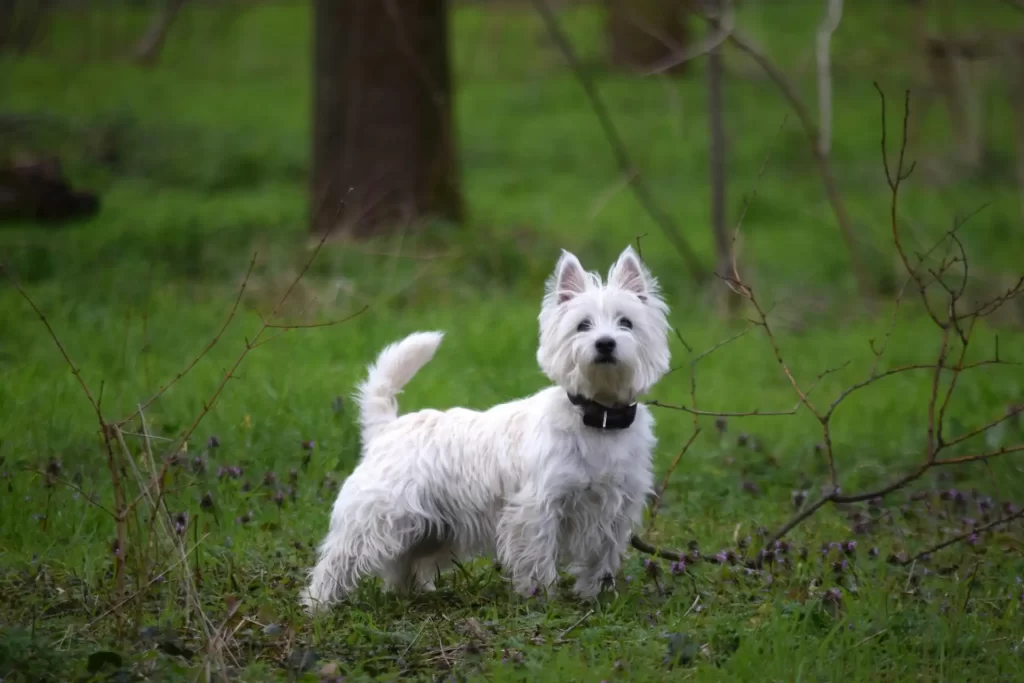
West Highland White Terriers (Westies) have a double coat with a wiry top layer and soft undercoat. Grooming a Westie dog involves regular brushing and exceptional attention to trimming. Many owners keep their Westie in a traditional hand-stripped look, which requires skill. Most pet owners choose to clip every 6 to 8 weeks.
Their white coat shows dirt easily, so bathing every 3 to 4 weeks is common. Grooming Westie dog fur helps prevent skin irritation, which Westies are prone to. Professional grooming can cost $55 to $75.
These intelligent little dogs enjoy the attention during grooming, especially when rewarded with treats.
Grooming Steps for a Westie Dog:
- Brush the coat 2–3 times a week with a bristle brush.
- Bathe every 3 to 4 weeks, using whitening shampoo.
- Clip or strip the coat every 6 to 8 weeks.
- Clean ears weekly and check for redness or wax.
- Trim nails monthly and brush teeth every week.
- Check paws for trapped dirt or grass seeds.
14. How to Groom a Sheltie Dog
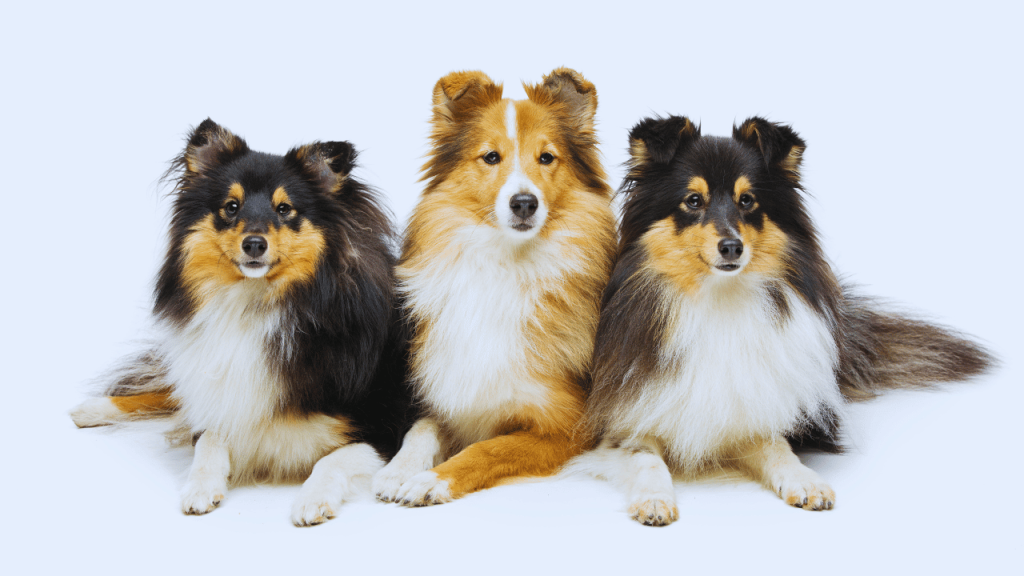
Shelties (Shetland Sheepdogs) have a thick double coat that needs regular brushing to prevent matting. Grooming a Sheltie dog should happen 2 to 3 times a week, with daily brushing during shedding seasons. Their fur can easily tangle behind the ears, under the legs, and around the chest.
A Sheltie’s coat should never be shaved. These dogs are active and love playing outside, so grooming also means checking for ticks and burrs. Salon grooming costs $60 to $80 and often includes de-shedding treatments.
Grooming Steps for a Sheltie Dog:
- Brush the coat 3 times per week with an undercoat rake and pin brush.
- Bathe every 6 to 8 weeks using a long-coat shampoo.
- Blow-dry on the cool setting to avoid overheating.
- Clean ears monthly and trim nails every 3 weeks.
- Never shave the coat, trim the paws and tail area.
- Use a mat splitter for tough tangles under the legs or ears.
15. How to Groom a Bernese Mountain Dog
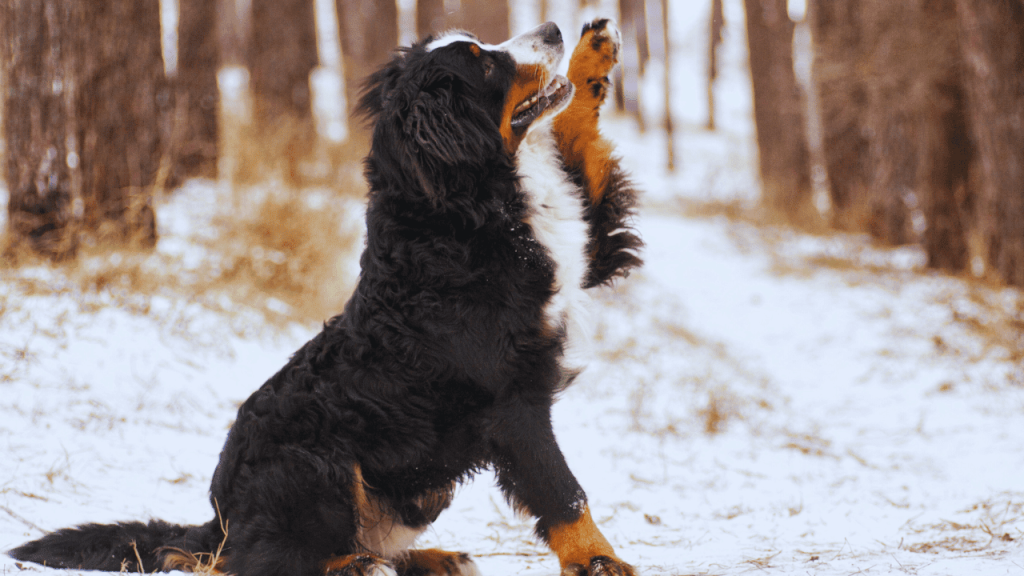
Bernese Mountain Dogs are large, loving, and very furry. They have long, thick, double coats that shed year-round. Grooming a Bernese Mountain Dog means brushing several times a week, giving them a full bath, and trimming them every 8 to 10 weeks. Without regular brushing, their coat can get matted and uncomfortable.
Professional grooming for a Bernese can cost $80 to $110, depending on the dog’s size and coat condition. Grooming also helps spot signs of arthritis, ear infections, or ticks.
Grooming Steps for a Bernese Mountain Dog:
- Brush 3 to 4 times weekly with a slicker brush and undercoat rake.
- Bathe every 2 to 3 months with a deep-cleaning shampoo.
- Dry thoroughly to avoid mildew in the coat.
- Trim the fur around the paws, hocks, and ears.
- Clean ears monthly and trim nails every 3 weeks.
- Check for skin lumps or injuries during brushing.
16. How to Groom a Border Collie Dog
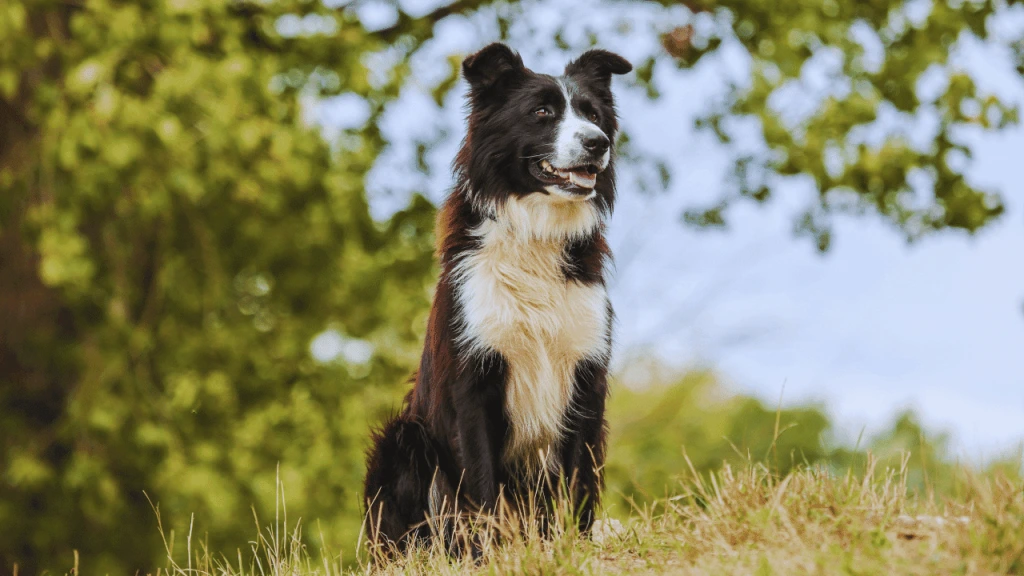
Border Collies are hardworking, intelligent dogs with medium to long coats. Grooming a Border Collie dog keeps them comfortable and clean. They shed moderately all year and heavily during spring and fall. Brushing 2 to 3 times a week is enough for most of the year. Professional grooming costs $50 to $75. Home groomers should watch for mats behind the ears, around the neck, and in the feathering on the legs. If you read and follow this guide, you can groom your Border Collie yourself. If you want to turn this skill into a career, you can also learn more from our guide on How to Become a Dog Groomer to become a professional groomer.
Grooming Steps for a Border Collie Dog:
- Brush the coat 3 times per week with a slicker brush.
- Bathe every 6 to 8 weeks with a gentle shampoo.
- Trim feathering on legs, chest, and tail if it gets too long.
- Clean ears monthly and check for signs of infection.
- Trim nails every 2 to 4 weeks.
- Use a dematter for tricky tangles around the belly or tail.
Conclusion
Now you know how to groom every type of dog from this list of 16 popular breeds. Grooming is about more than just looking nice. It’s about health, safety, and showing love. Regular brushing, bathing, and trimming keep your dog happy, clean, and confident. Whether at home or with a groomer, grooming should always be gentle and fun. With the right tools, patience, and a little practice, you can keep your dog’s coat in top shape and enjoy every moment.

